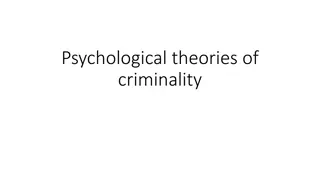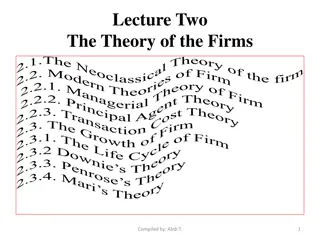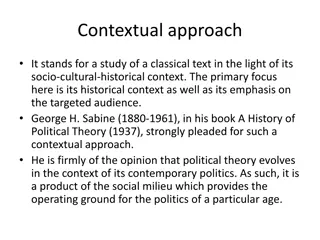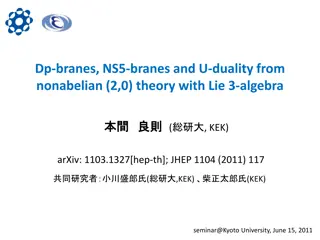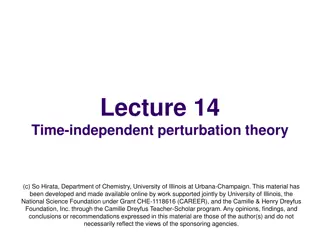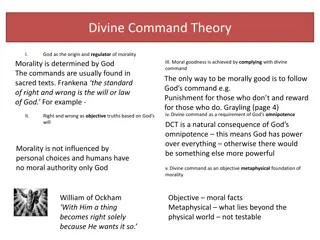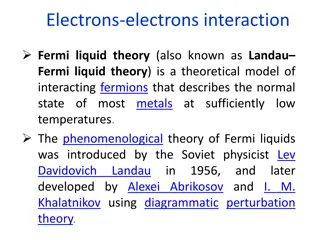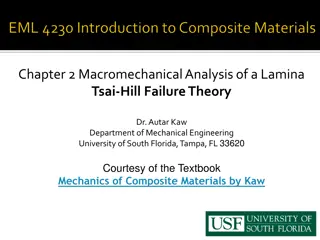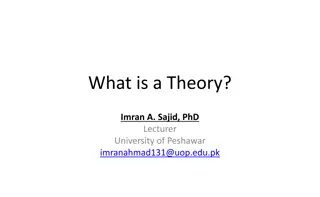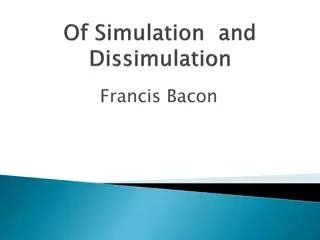
Cryptology Fundamentals: Security Theorems & Cipher Analysis
Explore the fundamentals of cryptology security theorems, including Shannon's security theorem, clear text redundancy, key entropy, and information entropy. Dive into cipher analysis problems, calculation of cryptogram bits, unicity distance, data rate changes, key length computations, and system security adjustments for cipher design. Discover the interplay between key length, entropy, unicity distance, and data compression in ensuring secure communication.
Download Presentation

Please find below an Image/Link to download the presentation.
The content on the website is provided AS IS for your information and personal use only. It may not be sold, licensed, or shared on other websites without obtaining consent from the author. If you encounter any issues during the download, it is possible that the publisher has removed the file from their server.
You are allowed to download the files provided on this website for personal or commercial use, subject to the condition that they are used lawfully. All files are the property of their respective owners.
The content on the website is provided AS IS for your information and personal use only. It may not be sold, licensed, or shared on other websites without obtaining consent from the author.
E N D
Presentation Transcript
Introduction to Cryptology Tutorial-05 Fundamentals of Secrecy Theory 04.04.2023, v37 Page : 1
Summary of security fundamentals Shannon security theorem: Perfect Security condition is H (Z) H (X) ( ) r H Z K r ( ) Where r is the clear text redundancy N H X N = = Unicity Distance nu n r u H(Z) = Key entropy, H(x) = Information entropy, N information length, K key length K r ( ) N H X N = = n Clear text redundancy r Plain Text Padding PTP: and u N + = N Bits L Bits padding ' r rL After PTP: N Clear text Random pattern H(X) + L N = New unicity distance: ' n n u u N Page : 2
Problem 5-1: A cipher encrypting an information block of 250 bits. The entropy of the information source is 150 bits. The key length of the cipher is 64 bits. How many cryptogram (cipher text) bits are at least necessary for an attacker to observe, in order to be theoretically capable to break the cipher. Solution 5-1: The minimum number of cipher text bits necessary to enable theoretically breaking the cipher is the unicity distance nu Where: u n r K = K is the cipher key length and r the clear text redundancy. The Information redundancy is: ( ) 250 150 250 N n H X = = = 0.40 r The minimum number of cryptogram bits to break the cipher is 64 160 bits 0.4 r K = = = n u Page : 3
Problem 5-2: A cipher having a key length of 80 bits is encrypting a clear text information block of length 800 bits having an information entropy of 300 bits. 1. 2. Compute the unicity distance of the cipher. Find the new unicity distance if a random pattern of 1000 bits is appended to the information block. How much Is the change in the new channel data rate? 3. Solution 5-2: 1. The unicity distance can be found by substituting in the formula: , r is to be computed. K r = n u 80 K r ( ) 800 300 800 N H X N = = = 128 bits n = = = 0.625 , r u 0.625 + + 800 1000 800 L N = = = ' *128 288 bits 2. The new unicity distance n n u u N 3. 800 useful data bits and 1000 non-useful random bits are appended to enhance security however, these additional random bits include no transmitted information. percentage of useful data is = 800 / (800 + 1000) = 44% thus the channel data rate is reduced by 100% - 44% = 56% Page : 4
Problem 5-3: A cipher is to be designed with a unicity distance of 2500 bits. Compute the key length required for the cipher if the encrypted clear text block length is 1000 bits and clear text entropy is 500 bits. Find the required data compression to reduce the key length by 20% without reducing the system security (unicity distance). The unicity distance is to be increased to 3000 bits. How many random bits are to be padded to the information block to achieve the new unicity distance? Solution 5-3: 1. The key length can be found by substituting in the relation: Where: nu = 2500 1. 2. 3. K r = n u K r K ( ) 1000 500 1000 N H X N = = = = = = = = 2500 1250 bits n K 0.5 , r and u 0.5 2. To reduce the key length by 20% = 1250 * 0.2 = 250 bits to become 1000 bits, and still keep the 1000 2500 K n = = = unicity distance unchanged (nu = 2500), the new redundancy is 0.4 r u Page : 5
Solution 5-3 cont.: to find the new data length, substitute in the redundancy formula ( ) 500 N N H X N N = = = = = 0.4 833 bits (data compressed to 833 bits) r N 3. + + 833 L N L = = = = = ' 3000 *2500 167 random bits are to be appended to 833 n n L u u 833 N Page : 6
Problem 5-4: A block cipher having a key length of 136 bits is encrypting a clear text having an entropy of 64 bits. The clear text block size is 256 bits. 1. 2. Compute the unicity distance of the cipher nu . Compute the new unicity distance of the cipher if 128 random bits are appended to each clear text block. And the clear text is compressed by 50%. Is the cipher theoretically breakable after this modification if the attacker can only observe 500 cipher text bits? Why? Solution 5-4: 3. K = 136 Bits, H(x) = 64 Bits, N = 256 Bits, r = ? 1. Unicity distance u n ( N H X r N 2. The new data block length is N = 128 (50% of the original one), entropy H(x) do not change by compression + = + 136 ' 544 bits ' 0.25 r 3. The number of observed cipher text bits is only 500 bits and is smaller than the unicity distance (544 bits). Therefore, the cipher is theoretically impossible to break. K r 256 64 256 = ) 136 0.75 K r = = = = = = = 0.75 181 bits As n u + + + ' [ ( L ) ] 128 128 [64 128] 128 128 + N L H X L = = ' 0.25 r Therefore the new redundancy is K n = = ' N = And u Page : 7


